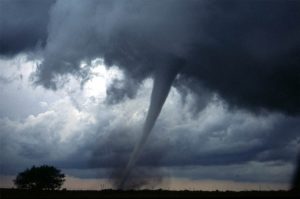Report On Weather Disasters: WMO:

The World Meteorological Organization (WMO), has released a report, which stated that weather disasters killed 2 million in the last 50 years.
- WMO has published ‘Atlas of Mortality and Economic Losses from Weather, Climate and Water Extremes, from 1970 to 2019’.
- WMO is a specialized agency of the United Nations.
Findings of the Report:
- No. of Disasters: The number of disasters has increased by a factor of five over the 50-year period, driven by climate change, more extreme weather and improved reporting.
- From 1970 to 2019, weather, climate and water hazards accounted for 50% of all disasters, 45% of all reported deaths and 74% of all reported economic losses.
- More than 91% of these deaths occurred in developing countries.
- Droughts, storms, floods and extreme temperature were the leading causes.
- Decreasing Number of Deaths: Due to improved early warning systems and disaster management, the number of deaths decreased almost threefold between 1970 and 2019.
- Spiralling Costs: During the 50-year period, US$ 202 million dollars in damage occurred on average every day.
- Economic losses have increased sevenfold from the 1970s to the 2010s.
- Storms, the most prevalent cause of damage, resulted in the largest economic losses around the globe.
- Climate Change Footprints: The number of weather, climate and water extremes are increasing and will become more frequent and severe in many parts of the world as a result of climate change.
- More water vapor in the atmosphere has exacerbated extreme rainfall and flooding, and the warming oceans have affected the frequency and extent of the most intense tropical storms.
- This has augmented the vulnerability of low-lying megacities, deltas, coasts and islands in many parts of the world.
- Failure of Sendai Framework: The report also warned that the failure to reduce disaster losses as set out in the 2015 Sendai Framework is putting at risk the ability of developing countries to eradicate poverty and to achieve other important Sustainable Development Goals (SDGs).
- Sendai Framework 2015 was adopted at the Third United Nations World Conference on Disaster Risk Reduction, held in 2015 in Sendai, Miyagi, Japan.
- The present Framework applies to the risk of small-scale and large-scale, frequent and infrequent, sudden and slow-onset disasters caused by natural or man-made hazards, as well as related environmental, technological and biological hazards and risks.




